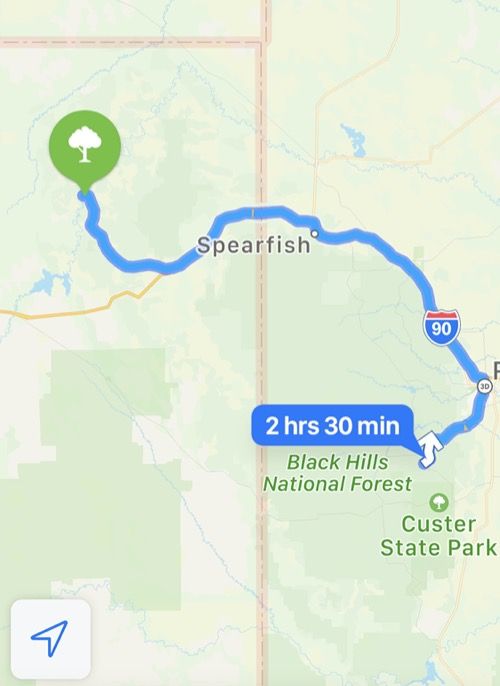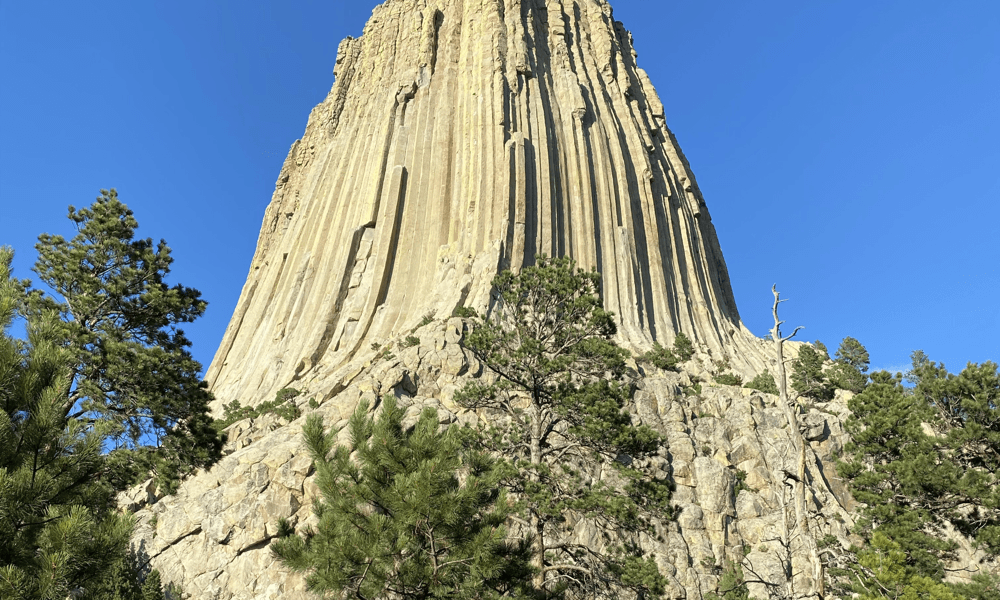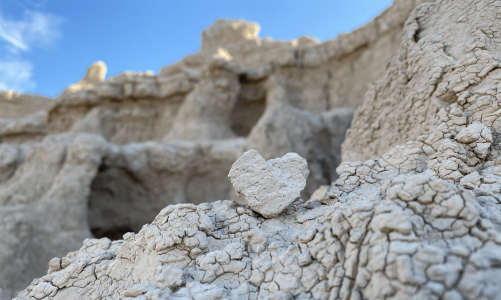
Our last sight of the day was Devils Tower. Devils Tower seems like a stone that just randomly explodes out of the prairie. But how it formed is a very interesting topic. Geologists agree that Devils Tower began as magma. What they can’t agree on are how the magma cooled, or its relation to the surrounding geology of the area.
The simplest explanation is that Devils Tower is a stock(a small body formed by magma which cools underground and was later exposed by erosion). Other theories have suggested that Devils Tower is a volcanic plug or that it is the neck of an extinct volcano.
The small amount of evidence of volcanic activity in that area creates doubt of that idea. Ironically, the erosion which exposed the Tower to us also erased any evidence needed to confirm which theory of Devils Tower’s formation is the correct one. After driving for a while we were able to see it in the distance. It was a slab of rock on the horizon. As we got closer, we could see it in more detail.
Now it looked more like a tree stump. But Devils Tower is actually made of igneous rock. You can see its cracked columns once you walk right up to it. Those cracks were formed in the very beginning. As the magma cooled, it shrunk, and stress points were made. To release all of that stress, the solidified magma began to crack.
As time went on, the cracks ran downwards. That’s how these huge 6 sided columns formed. We took a trail through the forest that takes you around the whole of Devils Tower. No two sides of the tower are exactly the same. One side is more slanted, one has more broken columns, and so on. That was the end to our Devils Tower viewing, and we drove to our hotel.
Our hotel was on a ranch, which was pretty cool. The inside felt very homey and cozy, and the wood smelled nice. Breakfast the next morning was also very good. After breakfast we drove to North Dakota.



